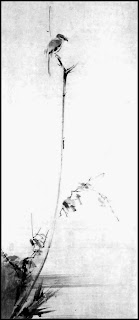Select Committee on Intelligence tasks ODNI to improve Global R&D monitoring
Chances are good that you haven't heard of S&TI. It's not one of the INTs that IC watchers love to write about. It's not in vogue like SIGINT and it's definitely not as sexy as HUMINT. It is, however, what I and my fellow researchers at Taia Global have been engaged in since 2010 and thanks to the excellent work of the National Commission for the Review of the Research and Development Programs of the United States Intelligence Community, it has become part of the Intelligence Authorization Act for 2014 (S. 1681) as drafted by the Senate Select Committee on Intelligence. And the Committee has tasked DNI Clapper to investigate and craft a strategic plan for improving how the Intelligence agencies conduct Science and Technical Intelligence (S&TI) on foreign R&D.
From the report which accompanied the act:
The Commission also highlighted the IC’s inability to understand, let alone bring coherence to, the efforts of its various elements against foreign science and technology (known as S&TI). S&TI informs not only IC R&D investment decisions, but also policymakers’ decisions about what capabilities to develop. The IC’s R&D and S&TI capabilities are only growing in importance given the pace and scope of change in technology and the threat environment.
Therefore, within 180 days of enactment, the DNI, in conjunction with the Under Secretary of Defense for Intelligence (USD(I)), shall provide a Zero Based Review to the congressional intelligence committees. This Zero Based Review shall include the following:
- The identification of total financial investments for R&D functions and programs allocated across the NIP and Military Intelligence Program (MIP), and their relationship to investments at other U.S. Government departments and agencies;
- An explanation of the requirements process for S&TI across the IC, including identifying similarities and differences in procedure and nomenclature across the various agencies and elements;
The Committee also believes a strategic plan for R&D and S&T is essential to meeting the challenges of a globalized, interconnected world. The rapid diffusion of science and technology across the globe provides state and non-state actors with new opportunities to develop asymmetric advantages, increasing the risk of strategic surprise to the U.S. Government. From advanced manufacturing to advanced biometrics, we cannot take for granted legacy superiority in technology and expect the United States to maintain its competitive edge. The unique nature of science and technology requires a renewed commitment from senior leaders within the IC, especially at a time when neither R&D nor S&TI attracts sufficient prioritization from policymakers in the executive and legislative branches of government.
- A review of current organization, to include IC leadership and management of R&D and S&TI efforts across the IC and within each agency, for how the IC attains synergies and unity of effort, and how it avoids unnecessary duplication of R&D.
Therefore, the Committee directs the DNI, in conjunction with USD(I), to append a Strategic Plan to the Fiscal Year 2015 congressional budget submission. The plan shall include both the NIP and MIP. The Strategic Plan must include mechanisms to:We are 75 days away from our alpha release of REDACT, the world's first commercial Rival State R&D search engine and we're looking to engage with five alpha corporate customers in the industry sectors of aerospace, banking, or energy, or any enterprise-level security operations team. As an example of the extent of our database, here's a 50,000 foot view of our China silo captured two weeks ago. If you aren't used to Prezi, just click your mouse to zoom in or click and drag your mouse to move around the image.
- Establish robust leadership, unity of effort, and an emphasis on R&D issues;
- Establish an executive agent within the IC for S&TI;
- Better align R&D investments across the IC in order to avoid unnecessary duplication and to achieve synergies among R&D efforts across the NIP and MIP;
- Develop partnerships with, and leverage talent from, academia and industry, especially smaller, innovative firms that may not traditionally collaborate or contract with the U.S. Government (emphasis added), and an R&D reserve corps to supplement the IC’s expertise as needed;
- Increase policymakers exposure to global R&D trends that could affect U.S. national security or undermine the U.S. Government’s R&D efforts (emphasis added);
- Leverage the foreign scientific and technical talent increasingly available to U.S. academic institutions and businesses.
For more information, request our REDACT information sheet. We are only accepting five alpha customers so act soon.





Comments
Post a Comment